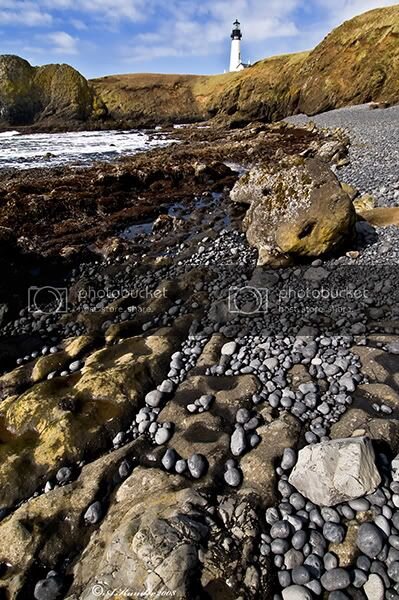C
chris61182
0
Yaquina Bay is an enormous body of water which can take a lifetime to explore and uncover all of its secrets. I've only begun to scratch the surface and soon will be moving north and fishing Tillamook bay instead, so hopefully others will pick up where I left off.
For the bank angler the two jetties are often the focal point of a fishing trip as they are rather prominent and easy to find. To reach the north jetty park at Yaquina Bay State Recreational Site and follow the steep trail to the beach, then simply walk over the dunes to the jetty. From the bridge to the start of the boulders making up the jetty is a shallow water area which makes for great tide pooling on low tides and likely clamming as well though I've never seen clammers over there. If you venture out on the north jetty, be very careful, the rocks are treacherous even in nice weather, and large waves can break over the jetty and wash you off. And the cold water and fast flowing tides are likely to be dangerous, possibly even deadly for strong swimmer, let alone someone who isn't.
The south jetty is much more easily reached and offers considerably more safe places to fish. But don't under estimate its hidden dangers, spray soaked rocks are often covered in algae or worse seagull poop, and one can easily loose their footing. But I digress, now back to the fishing. Along 26th street you'll find a series of what is known as finger jetties which are renown for attracting rockfish, perch, and greenling. And for the more adventurous one can continue out 26th street and if you have four wheel drive and are confident driving through sand one can drive rather far out the jetty though many to prefer park closer in and walk the last few hundred yards to where the jetty starts to enter the ocean. The jetty is rather easy to navigate for about half of its way out into the ocean, but the further one goes, the larger the gaps between the boulders get and the more exposed to the ocean you'll get, so again be careful. The fish can be located anywhere the length of the jetty, and fish like the rockfish and perch will travel in schools so when you catch one there are likely to be others in the area too.
For the bank angler the two jetties are often the focal point of a fishing trip as they are rather prominent and easy to find. To reach the north jetty park at Yaquina Bay State Recreational Site and follow the steep trail to the beach, then simply walk over the dunes to the jetty. From the bridge to the start of the boulders making up the jetty is a shallow water area which makes for great tide pooling on low tides and likely clamming as well though I've never seen clammers over there. If you venture out on the north jetty, be very careful, the rocks are treacherous even in nice weather, and large waves can break over the jetty and wash you off. And the cold water and fast flowing tides are likely to be dangerous, possibly even deadly for strong swimmer, let alone someone who isn't.
The south jetty is much more easily reached and offers considerably more safe places to fish. But don't under estimate its hidden dangers, spray soaked rocks are often covered in algae or worse seagull poop, and one can easily loose their footing. But I digress, now back to the fishing. Along 26th street you'll find a series of what is known as finger jetties which are renown for attracting rockfish, perch, and greenling. And for the more adventurous one can continue out 26th street and if you have four wheel drive and are confident driving through sand one can drive rather far out the jetty though many to prefer park closer in and walk the last few hundred yards to where the jetty starts to enter the ocean. The jetty is rather easy to navigate for about half of its way out into the ocean, but the further one goes, the larger the gaps between the boulders get and the more exposed to the ocean you'll get, so again be careful. The fish can be located anywhere the length of the jetty, and fish like the rockfish and perch will travel in schools so when you catch one there are likely to be others in the area too.
